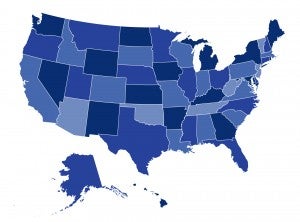
Today, the Robert Wood Johnson Foundation released four new cross-cutting reports prepared by the Urban Institute and CHIR as part of the Affordable Care Act (ACA) Implementation—Monitoring and Tracking series. The reports are part of an ongoing series of in-depth case studies based on site visits in 10 key states and reports from national data sets. The 10 states are Alabama, Colorado, Maryland, Michigan, Minnesota, New Mexico, New York, Oregon, Rhode Island, and Virginia.
Today's reports focus on trends across the 10 states regarding the early market reforms; state insurance exchange development; insurance rate review; and plan participation and competition within the exchange. Here are the findings, in brief:
- Early insurance market reforms are being implemented in all 10 states with the encouragement and efforts of state officials, insurers, and consumer advocates.
- Although progress in implementing exchanges varies considerably across states, policy-makers, stakeholders, and consumer advocates have been universally highly engaged in the process.
- The majority of the states appear to view the ACA’s rate review provisions as a welcome opportunity to promote accountability for insurers and educate consumers about the factors underlying rate increases.
- Markets with a dominant insurer or a dominant hospital may be less likely to experience increased insurance plan competition under the ACA. Those markets comprised of a few strong insurers and no dominant hospital will likely see increased competition under the ACA, which could lead insurers to offer lower-premium plans.
For more information on this project, including state-specific reports such as the ones featured here, be sure to follow CHIRblog's “State of the States” series!

